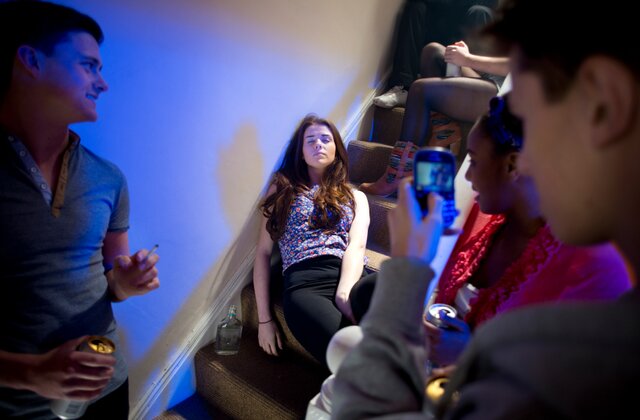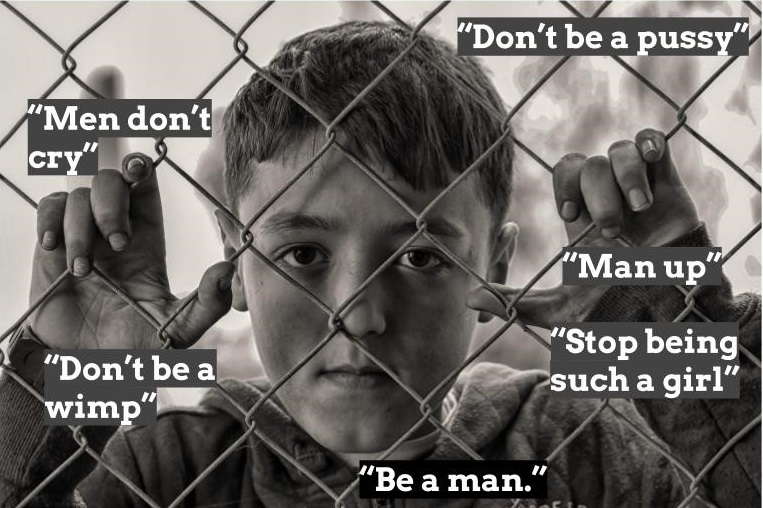Question: There’s been a lot of discussion about “toxic masculinity” in recent decades. Is this just the critique of masculinity by feminists or has masculinity always been toxic?
Frank answers: Actually, I don’t think the idea of “toxic masculinity” came from a feminist critique of masculinity as such. I think it resulted from the development of hyper-masculinity in male responses to changing gender roles in society and culture in the post-WW II era. It has also changed meanings over the decades as it has been incorporated into university gender studies programs. That’s one reason I have been reluctant to write about women’s issues.
One big issue concerns essentialism. What does it mean to be a woman? There is no agreement today in gender studies about what it means to be a woman since they no longer depend on biology for an answer. For me I know what it means to be a man. I look down to see if I was born with a penis. This is not what was “assigned” at birth; it’s my sex that developed biologically. Gender, on the other hand, is a social construct. Masculinity is gender, and gender is determined by social norms and cultural expectations. I don’t believe my sex can change, except by surgical mutilation. Gender can change with changes in society and culture. So it is also the case that we must ask what it means to be a man in our present social and cultural context.
People have been going through gender changes in recent years. Millions of men are falling behind women academically and suffering from a lack of meaning and purpose.

We are certainly long past the time when archaic male gender traits went back to hunter/gathering societies when strength and cunning were needed to feed and protect the tribe. During World War II many men were drafted or volunteered for military service and fought to protect our nation. Women replaced the men in factory jobs to keep the war machine supplied. By the 1950s many men were back to working desk jobs in large corporations or on the assembly line in manufacturing plants. Suburban life was expanding and commuting to work was becoming normal. In earlier times “moms and pops” were often partners in business (and in child rearing) in family shops and on farms. In the 1950s men were still the expected to be the breadwinners and their wives were at home taking care of the children.

In the 1960s, when financial need (such as paying the college costs of their children) sent women back into the work force, there was an expectation that gender roles of men and women would be equalized in the workplace and at home. This was the era of women’s liberation. This was a change that many men simply couldn’t adjust to and men were looking for ways to assert their masculinity as they had known it.
By the 1980s “iron Johns” were taking off into the woods as weekend warriors to recover their lost masculinity. This was when issues about masculinity were being discussed. This mythopoetic foray into primitive masculinity was perhaps a release valve for many pent-up male emotions. But many men didn’t avail themselves of such outlets and found more “toxic” ways of exerting their masculinity in bullying others, devaluing women, expressing homophobic reactions to gay liberation, and sometimes, as in urban gangs, engaging in wanton violence. They cultivated views of manliness that were passed on to their sons such as “man up” in response to traumas and “boys will be boys” to justify improper social behavior toward girls. Man-to-man intimacy, which had existed between buddies, also suffered out of fear of being perceived as gay.

A view of masculinity emerged which held that men should always show strength but not show emotions, that they should be self-sufficient and not be dependent on others, that they should always be “good in bed” (sexually virile) and be the authority in their families. Much of this was also encouraged by evangelical churches and parachurch organizations in the 1990s such as Focus on the Family and Promise Keepers as well as in some ethnic sub-cultures.
The churches have not been successful with men’s ministries because while churches may be accused of being patriarchal, in actuality they are overly feminized in their rituals and symbols. That’s why one finds such a lack of male participation in the life and worship of the church. From time to time, movements emerge that tried to compensate for this, like Muscular Christianity at the beginning of the 20th century and Promise Keepers at the end of the century. But these movements have had no staying power, and it serves no good purpose to form “manly men” who lack a sense of physical ease and vulnerability even in their male friendships.
With the rise of the gay liberation movement at the same time as the women’s liberation movement, homophobia increased as another way in which men asserted their masculinity. In men’s groups or on sports teams you could hug another man, but only under the guise of “brotherly” affection or being team mates.

Late 19th century German psychology categorized everyone as heterosexual (opposite sex desire) or homosexual (same sex desire). This ignored the fact that throughout history and in various cultures men could have homoerotic man-on-man relationships, especially between mature men and youth, and then settle into marriage and family. We see this especially in ancient Greek, Celtic, and Germanic societies. In those warrior cultures being a man meant having homoerotic relationships with other men. The bonding it created was needed when fighting against an enemy.
The Kinsey study of 20,000 men in the mid-20th century reported that a very small percentage at either end of the spectrum of sexual encounters were exclusive opposite-sex or same-sex. The sexual experiences of most men were along a spectrum. Many men who later married and had children had had one or more homosexual encounters along the way.
As homosexuality came to be seen as abnormal, a sickness, even sinful, it produced two result. One is that boys and men wanted to have opposite-sex relationships to prove that they weren’t homosexual, and/or they turned against homosexuals to prove that they were heterosexual. This latter group bullied homos or queers as a way to suppress their own same-sex desires and to affirm that “I’m not that way.”

Extreme manifestations of hyper-masculinity that can be branded “toxic” include sexual aggression (rape) and control (spousal abuse), hyper-competitiveness and the need to dominate others, a sense of entitlement, glorifying violence, a sense of isolation from and low empathy toward others. This is a long way from the responsible use of male strength and cunning to feed and protect the tribe. The root cause of these behaviors is really insecurity with one’s own sense of masculinity. Men must be always proving their manliness.

As I said, ideas about what it means “to be a man” are established by social norms and cultural expectations. If society prizes athleticism, boys who aren’t athletic or who have other interests will be judged unmasculine, even queer. This can result in bullying, and many men report on the negative effects bullying in school had on their development as men. They felt pressured to join sports teams or to try to win over girls who were also socially influenced to seek out the jocks as their boyfriends. Such boys end up feeling emasculated and question their own masculinity.

Sex is a big part of what it means to be a man. Men prove their virility by their sexual conquests. This is a big issue on college campuses. The more sexual conquests you have, the more of a man you are. An easy “lay” is getting a young, impressionable girl to a college party and plying her with alcohol and then getting to a room where you can take sexual advantage of her impaired state of awareness and judgment. This has caused the pervasive rape culture that has existed on college campuses.
While college rules have required mutual consent for having sex, there is ambiguity and uncertainty about what consent means. When the girl comes to her senses and regrets what has occurred and accuses the boy of raping her, rape becomes hard to prove and the authorities are reluctant to ruin the life of an otherwise “good kid from a good family” by giving him the stiff sentence he probably deserves. So the damage done by toxic masculinity contributes to a culture where rape and sexual assault are tacitly permitted.

A new issue is that influencers on social media are promoting mysogynistic views about women that are appealing to teen age boys. Andrew Tate, a British-American former professional kickboxer, who rose to fame in the last couple years through offering his mostly male fans advice on self-improvement, is also a self-described misogynist. He has compared women to dogs, saying women shouldn’t be allowed to drive, and claiming that men have “authority” over their female partners. He’s also argued that women should “bear some responsibility” for being raped.
Tate has been banned from TikTok, Facebook, Instagram, and YouTube for hate speech, but fan clips of his videos still circulate on those sites, and he was reinstated on Twitter by Elon Musk after a five-year ban. He is especially attractive to young teen boys because of his muscular masculinity and life style. His misogynist views are especially influential on pre-teen middle school boys who are at the awkward stage in relating to girls with whom they also may struggle to compete with academically. They are learning the wrong lessons from their idol. But it’s been reported that in the U.S. and U.K. they often raise questions about what their (female) teachers think about Tate’s views. Lesson plans should be interrupted to deal with questions about views that youth are learning from social media influencers.

We also need to recognize that teenage boys are watching porn videos and a high percentage of these show aggressive sex toward women. Sixteen-year old boys are not only raping high school girls but also their thirteen-year old sisters. Counselors who deal with these cases report that watching porn makes the boys depressed (they can’t compete with the actors in porn videos), suffer from erectile dysfunction, and are less likely to get married. They will take out their notions of sex as a transactional, violent pursuit on women.
Boys need to learn from other mentors than porn actors who show that true masculinity and sex can flourish without being toxic to others. It does so when men can openly experience a wide range of emotions, have a sense of communal and personal responsibility, recognize the need for the interdependence of men and women, show acts of kindness to others, express vulnerability, and add a touch of softness to strength, especially in making love. Being “good in bed” does not mean dominating one’s partner but engaging in mutual pleasuring by being sensitive to the needs of the other. In this connection we should observe that the male sexual organ alternates between being soft and hard. Since it’s often said that there’s a connection between our brain and our penis, our sex organ should be a model for how we act and respond to situations as men: hard when needed but otherwise soft most of the time.
Pastor Frank Senn






